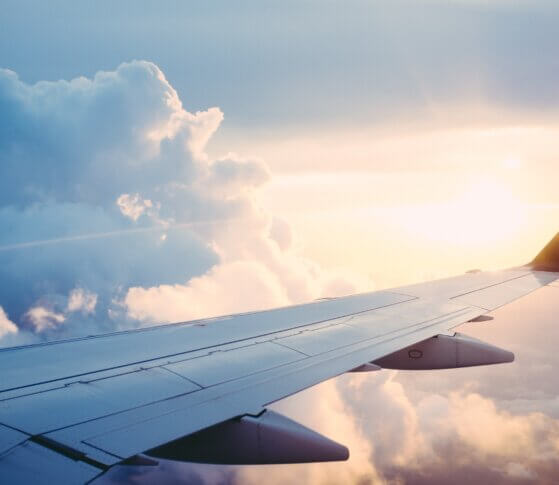5 Top Tips for Coping with Aerophobia
So your holiday is booked, and you are really looking forward to the break – but the thought of getting on the plane is filling you with panic…
So your holiday is booked, and you are really looking forward to the break – but the thought of getting on the plane is filling you with panic…

What is aerophobia? Aerophobia is an extreme fear of flying in an airplane. People with aerophobia may be scared about different aspects of flying, such as take-off or landing.
While statistics show that air travel has the lowest death rates among other forms of transportation, it can be hard to reason your way out of the anxiety. Another name for this condition is aviophobia.
Most people with aerophobia aren’t actually afraid of the plane crashing. Instead, you might fear the overwhelming anxiety that comes with being on the plane. The anticipation of flying, or thinking about flying, is often as troubling as being on the flight itself.
If you have aerophobia, you might avoid flying at all costs. This could mean missing family vacations, or you might insist on other modes of transportation, such as cars, buses or trains — even if they’re less convenient than flying. If you have aerophobia, you might also avoid movies, books or news stories that relate to air travel.
To make sure that you don’t miss out on exploring and experiencing all that our wonderful world has to offer, here are some tips to help ease your fear of flying:
1. Distract yourself
The less time you spend worrying about risks, interpreting every noise, and watching the flight attendants’ every step, the better. Read, play games, watch all of the movies, and listen to your favorite music as much as you can. If none of that sounds appealing: Sleeping and eating are also good ways to make time pass more quickly.
2. Don’t worry about other scary things
Flying is like swimming: just like you cannot fall out of a lake or ocean, you cannot fall out of the sky. Worried about the engines? Airplane engines are checked a lot, and even in the very rare case that they both happen to fail at the exact same time, a plane flying at about 30,000 feet can glide up to 100 miles without engines and attempt an emergency landing. Last but not least, if you’re scared of someone opening the doors mid-flight, fear no more: The doors are locked, and the pressure difference between the cabin and the outside prevent this urban myth from becoming a reality.
3. Download an app or two
For everything in life, there’s an app! and the fear of flying is no exception: The SOAR app will support you before, during, and after the flight by providing videos, information about turbulence, a G-force meter, weather forecasts, videos and much more. If you’re a fan of statistics, check out the Am I Going Down app, which does exactly what the title promises: You type in your flight information and learn the likelihood of crashing. It might sound a bit morbid, but since crashes are extremely rare, seeing the odds can be helpful. To illustrate how encouraging the Am I Going Down app can be: If you flew from London to New York, the chance of crashing would be about 1 in over 5.3 million. To die in a plane crash on that exact route, you would have to fly every day for 14,716 years.
4. Get to know the facts about turbulence
There’s both good and bad news: The bad news is that climate change will most likely increase turbulence, including the clear air turbulence that comes out of nowhere. The good news: Turbulence is only an inconvenience and not as dangerous as you think; in fact, planes shift only up to six meters during the shaking. Similarly, the wings will not break off – some of them can actually bend up to 90 degrees – and the plane will not suddenly flip on its back. Severe turbulence does cause injuries, however, so make sure you fasten your seatbelt whenever the seatbelt sign is turned on and whenever you’re seated.
5. Practice relaxation exercises
Even if you’re not afraid of flying, the tiny seats and lack of legroom can make you feel stressed out, so relaxation and meditation exercises can be super useful. Give it a Google (or search in your App store) and download or print them so that you can practice away even during landing and takeoff. When the seatbelt sign is not on, make sure you stretch your legs (and other body parts) and walk around every now and then. And remember to BREATHE!!!
Do what you can to help yourself and enjoy a well-earned break, knowing that you’re definitely not alone.